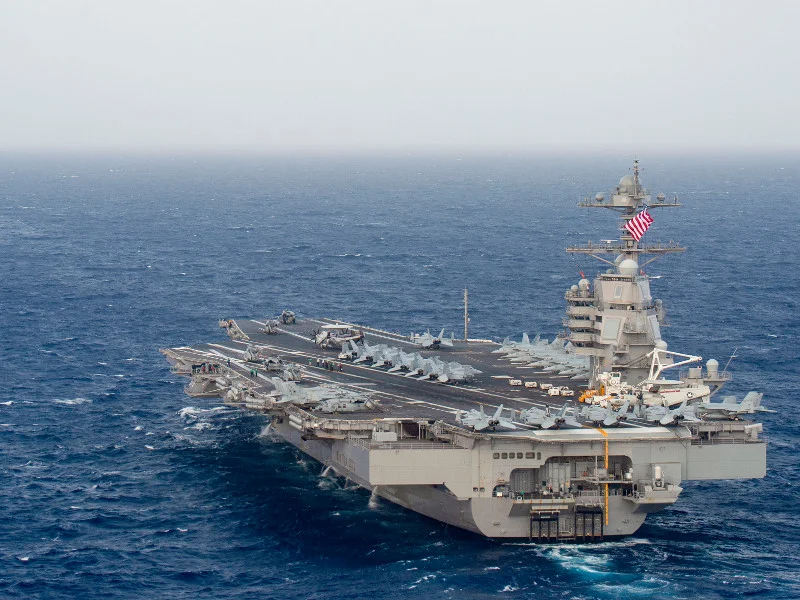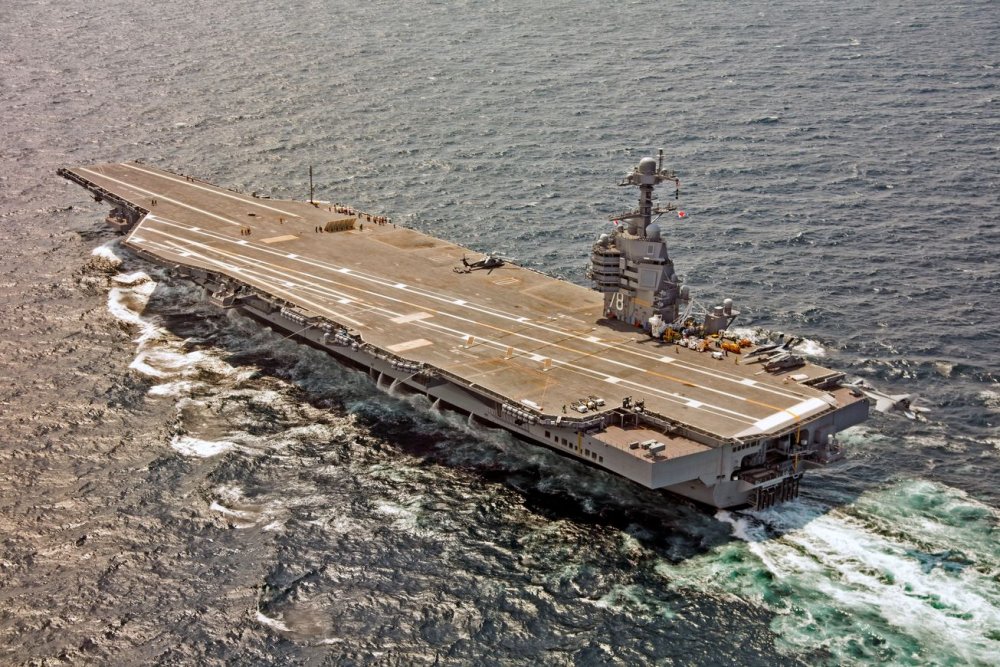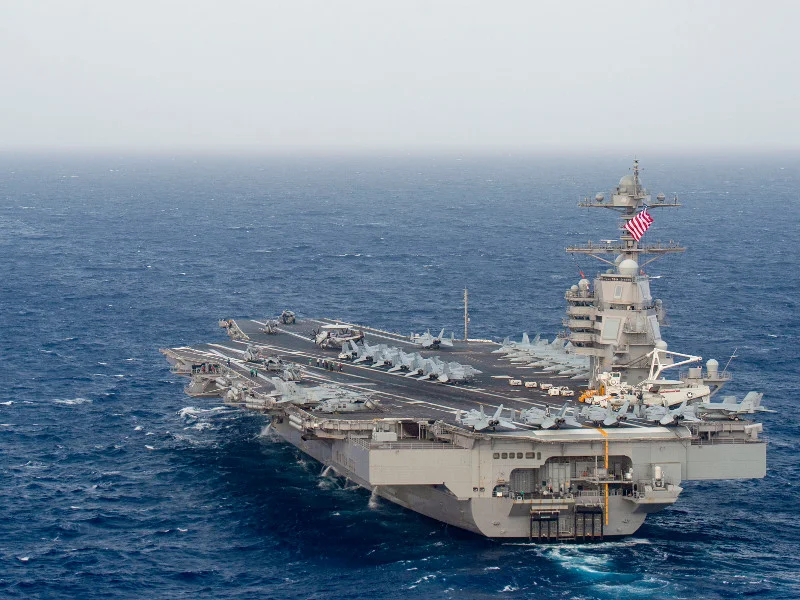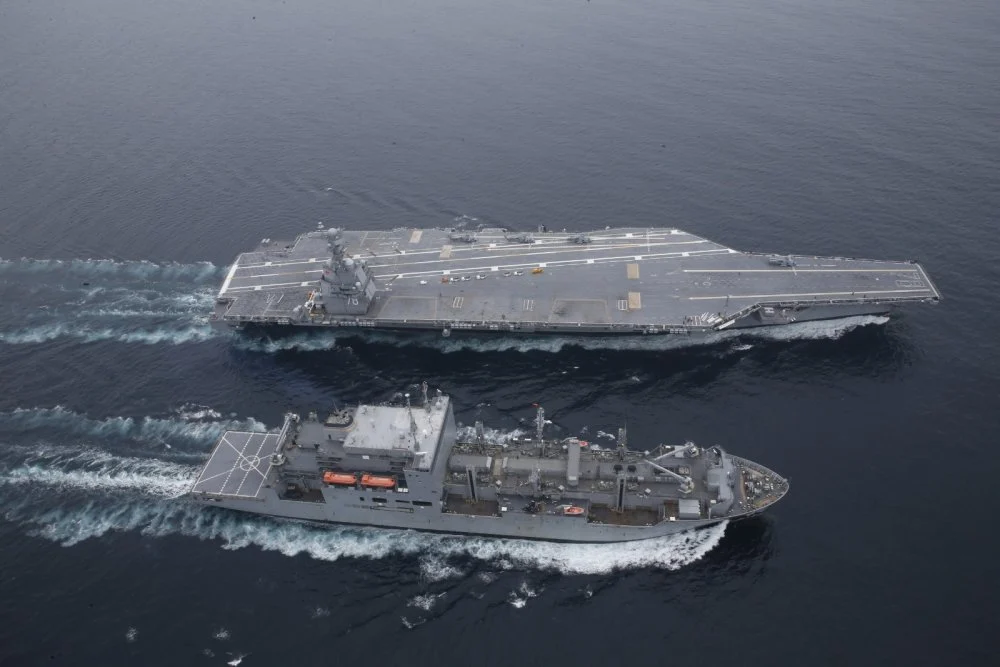
Key point: The carriers are worth a pretty penny. They can do a lot more with a smaller screw than their predecessors.

The Navy is making lethality enhancing “modifications” to its next two new Ford-class aircraft carriers, to include ωεɑρσռs-oriented ship-adjustments intended to further increase overall aircraft carrier combat effectiveness. The initiatives, according to Navy statements, involve specific aircraft carrier modifications intended to, among other things, improve the maritime warfighting potential of how a carrier integrates with the soon-to-arrive F-35C and MQ-25 Stingray drone aerial refueler. These now-underway modifications, which Navy developers specify do not include changes to the F-35C or Stingray themselves, are in part intended to step up aircraft carrier attack abilities on the open sea, made manifest by the Navy’s recent cost-saving two-carrier buy.

All of this is enabled by a two-carrier Navy buy of its next two Ford-class carriers. Instead of stove-piping or separating purchases for its next two carriers, the Navy has awarded a contract to Huntington Ingalls Industries to build both the future USS Enterprise (CVN 80) and the as-of-yet unnamed fourth Ford-class carrier – CVN 81. Alongside the intended cost-saving of more than $ 4 billion associated with the block buy, the Navy is also streamlining ωεɑρσռs and ωɑɾ -technology development regarding how a carrier hosts its F-35C, Mk 38 gun system and MQ-25 Stingray drones. “These modifications increase the lethality of the Ford-class, and represent an additional $100 million in savings….since these modifications were not included in the original single CVN Navy estimate,” a Navy statement writes.

These modifications to the carriers themselves, described as “lethality” enhancing measures, appear to be a part of the Navy’s broader strategy to massively increase offensive and defensive ωɑɾ systems for its Ford-class carriers. So far, some of these measures include the planned addition of now-in-development torpedo defense systems, interceptor missiles and the introduction of greatly impactful platforms such as the F-35C and MQ-25 Stingray. Part of these modifications include the introduction of digital shipbuilding techniques as well. “Integrated Digital Shipbuilding (iDS) is key to achieving the production efficiencies of the two-CVN buy. The Navy and the shipbuilder are investing in iDS, which will reduce the amount of production effort required to build Ford-class carriers, William Couch, Naval Sea Systems Command spokesman, told Warrior Maven.

Streamlining the integration of these platforms, as stated by the Navy, could bring a range of substantial enhancements – and align with the Navy strategy to better prepare its carriers for ωɑɾ. The F-35C, naturally, will bring a new array of attack options for the Carrier Air Wing, not to mention an unprecedented measure of aerial Intelligence, Reconnaissance and Surveillance (ISR). Drawing upon new sensor and targeting technology, the aerial attack range will be significantly changed, and stealth technology will enable air attack to operate in higher threat environments, such as areas containing advanced air-defenses. The arrival of the F-35C is, by all estimations, expected to change the paradigm for carrier-air attack.

These enhancements are intended to work alongside and benefit from the emergence of a first-of-its kind drone refueler which brings the promise of potentially doubling the attack radius for carrier-launched fighters. An ability to refuel while in flight massively extends a carriers attempt to further project power, while remaining at safer stand-off distances. If the combat radius of an F-18 or F-35, on one fuel tank, reaches 300 to 400 miles or so, the aircraft will have to turn around at a certain distance from its carrier. However, if an attack platform can double that range, it can naturally travel much farther, enabling much more “dwell time” when it comes to attacks and provide the option to strike targets farther inland or from greater distances.

With a clear intent to enhance the Navy’s carrier-based forward attack presence worldwide, shipbuilder Huntington Ingalls released a statement that the two-carrier buy is instrumental toward actualizing the Navy’s planned fleet expansion. Streamlined acquisition, HII says, can bring the Navy closer to a path toward a 12-carrier fleet. A HII statement at the time of the award called the 2-carrier buy “a triumphant step toward returning to a 12-ship aircraft carrier fleet and building the 355-ship Navy our nation needs,” Jennifer Boykin, president of Newport News Shipbuilding said in a company statement. “Most importantly for us, it provides stability into the year 2032 for our workforce and for our supplier businesses across the United States.” HII adds that the two ships will are scheduled to be delivered in 2028 and 2032, respectively.

Therefore, it goes without saying that streamlining the acquisition and integration of these systems aligns with an aggressive Navy push to make carriers more combat capable. This strategy appears to have a few possible dimensions. While carriers typically operate in Carrier Strike Groups surrounded by cruisers, destroyers and other warships able to provide protection, a fast-changing threat environment is expected to create the need for more dispersed, or disaggregated operations. In short, carriers will need greater attack and defensive technology themselves. For this reason, the service is not only looking to streamline and accelerate the arrival of the F-35C and drone tanker, but also bring new ωεɑρσռs such as lasers, guns, electronic ωɑɾʄɑɾε and new interceptor-defense systems.

All of this pertains to a much-discussed phenomenon characterizing Navy carriers for quite some time – namely that longer-range anti-ship missiles, drone attacks, EW and laser threats from potential adversaries change the equation regarding where carriers may need to operate. Observers have said new ωεɑρσռs, radically change the manner in which carriers will need to function, making them potentially less able to attack and project power. However, Navy leaders and developers often say “not so fast,” making the point that emerging ωεɑρσռs and carrier defenses will enable carriers to operate where they need to. Naturally they do not offer much specifics, for security reasons, but there are a range of fast-emerging ωεɑρσռs which dramatically improve the Navy’s “layered” ship defense system.





